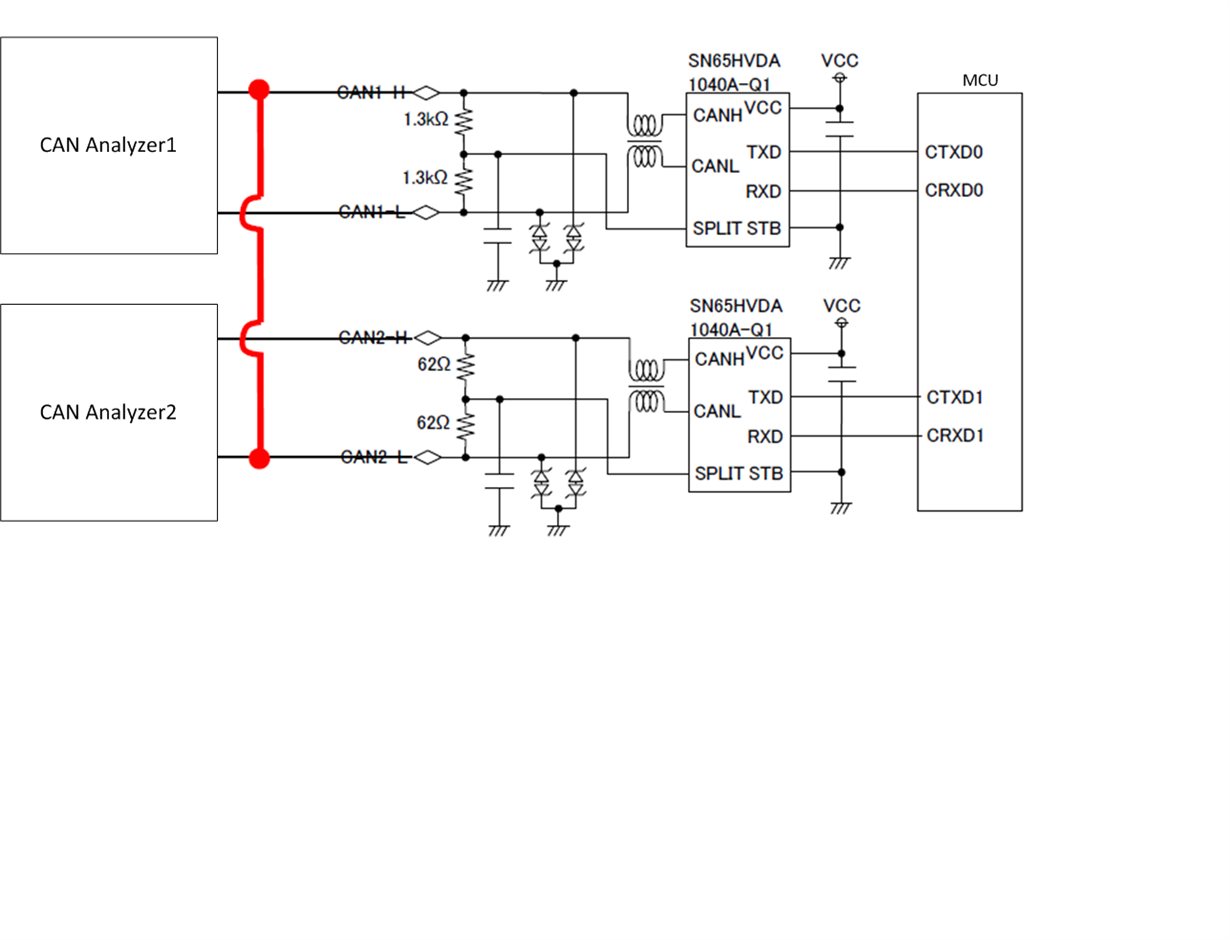Hi Champs,
I got question from my customer about fault response when CAN1_H and CAN2_L are short connected.
Please find attached figure.
With below condition,
For CAN 1 side operates normally, doesn't show any abnormal wave form.
For CAN 2, it's not possible any communication.
Customer asks about mechanism why CAN1 operates and CAN2 fails.
Could you provide the reason for the behavior from design point of view?
Best regards,



